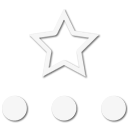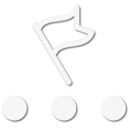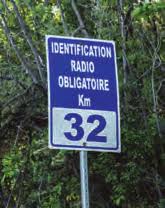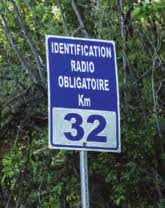
Off-Road Ranger I
Great information, thank you! I'll update the post!To add a point. There's no reason why the US 2m freq cant include Canada as well. I see no limitation in the bandplan that would prevent it.

Off-Road Ranger I
Great information, thank you! I'll update the post!To add a point. There's no reason why the US 2m freq cant include Canada as well. I see no limitation in the bandplan that would prevent it.

Enthusiast III
14283
The Overland Bound community has settled on some common "calling" frequencies for the most common radio types. These are meant to be a starting point for making contact with a Overland Bound members. If your local region already has other generally accepted practices, you may want stick with them instead.
U.S. & Canada 2 Meter Amateur Radio
Frequency: 146.46
This frequency is the generally accepted off-road calling frequency. Amateur operator etiquette means that this common calling frequency should be used primarily for initial contact. Any extended conversations or group use, like communication while on a trip or a trial run, should likely be moved to a different nearby frequency.
Licensing: In order to operate an amateur ("ham") radio in the United States of America, you must be licensed by the FCC. Other countries have their own licensing systems, so check with your local regulations. There are other threads here on the Overland Bound forums that discuss licensing, so refer to those for more details.
(links to existing bootcamp about getting licensed)
Range: Range varies quite a bit depending on radio, transmit power, antenna, and geography. A typical range of a handheld on the trail is realistically around 2-6 miles, but with clean line of sight, a good setup, and higher power output, distances of well over 25 miles can be obtained.
U.S. GMRS / FRS
Channel: 15
License: The FCC certifies specific radios for use on GMRS and FRS which share the same channels. Only an FCC certified device can be used on these frequencies, and additionally, GMRS use requires a household license to be purchased from the FCC that is good for 10 years.
CTCSS / Privacy Codes: Some FRS and GMRS radios offer the ability to use what are called Privacy Codes or CTCSS tones as a way to limit the incoming transmissions to only the people in your group. Look at your radios manual for details and be aware that in order to use this option, all radios in your group must also support this feature.
Range: Similar to the VHF amateur radios, a typical range for GMRS on the trail is likely somewhere around 2-6 miles. FRS radios (which do not require the additional FCC license) are much lower power, and therefore the range is significantly reduced, making them less desirable.
U.S. Citizen's Band (CB)
Channel: 16
License: There is no license requirement for CB use in the United States of America.
Squelch: Almost all CB radios will have a squelch control, this additional knob is used to adjust the noise cut-off on the incoming signal. If you find that other people in your group can hear you, but you can't hear them, adjust the squelch down as you may be filtering too much of the incoming signal.
Range: CB power output is limited to 4 watts, so in a typical trail situation, the range is realistically about 3-4 miles.
Australia & N.Z. UHF CB
Channel: 21
License: There is no license requirement for UHF CB use Australia or New Zealand
Range: UHF CB power output is limited to 5 watts, so in a typical trail situation, the range is realistically about 10km. In ideal conditions, you can probably double that distance, and for raised repeaters, you can probably reach up to 100km.
U.K. 27Mhz CB
Channel: 10
License: There is no license requirement for 27Mhz CB use in the U.K.
Squelch: Almost all CB radios will have a squelch control, this additional knob is used to adjust the noise cut-off on the incoming signal. If you find that other people in your group can hear you, but you can't hear them, adjust the squelch down as you may be filtering too much of the incoming signal.
Range: CB power output is limited to 4 watts, so in a typical trail situation, the range is realistically about 4-7km.
E.U. UHF CB / PMR
License: There is no license requirement for UHF CB use in the E.U.
Comms In a Group Run
Before any organized run, select a trail leader and hold a quick drivers meeting where, among other things, you can announce the details of how communication will be managed on the run. Select a "tail gunner" to monitor the rear of the pack, and if the group is large, a "mid gunner" as well. Announce the chosen radio type and the frequency/channel that will be used. Many times not every vehicle has a radio, or there may be some vehicles that do not have the radio type chosen as the primary means of communication. Consider relaying some important turn callouts and such to a secondary radio. For example, if ham radios will be used primarily, you might still announce important turns or warnings on a CB channel as well. Always let drivers know to keep an eye on the vehicle behind them in the rear view mirror and to stop if they ever lose sight. This will keep the group together even in the case that radio contact is lost or unavailable. When leading a moderate to large sized group, it's best to keep the radio chatter mostly focused around trail direction. Socializing on the radio in a larger group can end up making it difficult to call out important turns or obstacles. To make up for this, it's a good idea to have some regularly time stops for bio-breaks and socializing in person.

Off-Road Ranger I
It's just simplex so no offset and no tone is necessary really.For the 2m band is there a set shift and PL tone? Or do we just decided on the settings once the group meets?

Enthusiast III
14283
Ok Thank you. I have only had my HAM license since October 2018 so still catching on to everything.It's just simplex so no offset and no tone is necessary really.

Off-Road Ranger I
No problem. We've all been there.Ok Thank you. I have only had my HAM license since October 2018 so still catching on to everything.

Enthusiast III

Enthusiast III
Brien, would you consider listing the frequency of the GMRS Channel 15 on the header of the main page as well? I'm assuming it's 462.550 MHz, but sometimes the manufacturers use a channel plan of their own.The Overland Bound community has settled on some common "calling" frequencies for the most common radio types. These are meant to be a starting point for making contact with a Overland Bound members. If your local region already has other generally accepted practices, you may want stick with them instead.
U.S. & Canada 2 Meter Amateur Radio
Frequency: 146.46
This frequency is the generally accepted off-road calling frequency. Amateur operator etiquette means that this common calling frequency should be used primarily for initial contact. Any extended conversations or group use, like communication while on a trip or a trial run, should likely be moved to a different nearby frequency.
Licensing: In order to operate an amateur ("ham") radio in the United States of America, you must be licensed by the FCC. Other countries have their own licensing systems, so check with your local regulations. There are other threads here on the Overland Bound forums that discuss licensing, so refer to those for more details.
(links to existing bootcamp about getting licensed)
Range: Range varies quite a bit depending on radio, transmit power, antenna, and geography. A typical range of a handheld on the trail is realistically around 2-6 miles, but with clean line of sight, a good setup, and higher power output, distances of well over 25 miles can be obtained.
U.S. GMRS / FRS
Channel: 15
License: The FCC certifies specific radios for use on GMRS and FRS which share the same channels. Only an FCC certified device can be used on these frequencies, and additionally, GMRS use requires a household license to be purchased from the FCC that is good for 10 years.
CTCSS / Privacy Codes: Some FRS and GMRS radios offer the ability to use what are called Privacy Codes or CTCSS tones as a way to limit the incoming transmissions to only the people in your group. Look at your radios manual for details and be aware that in order to use this option, all radios in your group must also support this feature.
Range: Similar to the VHF amateur radios, a typical range for GMRS on the trail is likely somewhere around 2-6 miles. FRS radios (which do not require the additional FCC license) are much lower power, and therefore the range is significantly reduced, making them less desirable.
U.S. Citizen's Band (CB)
Channel: 16
License: There is no license requirement for CB use in the United States of America.
Squelch: Almost all CB radios will have a squelch control, this additional knob is used to adjust the noise cut-off on the incoming signal. If you find that other people in your group can hear you, but you can't hear them, adjust the squelch down as you may be filtering too much of the incoming signal.
Range: CB power output is limited to 4 watts, so in a typical trail situation, the range is realistically about 3-4 miles.
Australia & N.Z. UHF CB
Channel: 21
License: There is no license requirement for UHF CB use Australia or New Zealand
Range: UHF CB power output is limited to 5 watts, so in a typical trail situation, the range is realistically about 10km. In ideal conditions, you can probably double that distance, and for raised repeaters, you can probably reach up to 100km.
U.K. 27Mhz CB
Channel: 10
License: There is no license requirement for 27Mhz CB use in the U.K.
Squelch: Almost all CB radios will have a squelch control, this additional knob is used to adjust the noise cut-off on the incoming signal. If you find that other people in your group can hear you, but you can't hear them, adjust the squelch down as you may be filtering too much of the incoming signal.
Range: CB power output is limited to 4 watts, so in a typical trail situation, the range is realistically about 4-7km.
E.U. UHF CB / PMR
License: There is no license requirement for UHF CB use in the E.U.
Comms In a Group Run
Before any organized run, select a trail leader and hold a quick drivers meeting where, among other things, you can announce the details of how communication will be managed on the run. Select a "tail gunner" to monitor the rear of the pack, and if the group is large, a "mid gunner" as well. Announce the chosen radio type and the frequency/channel that will be used. Many times not every vehicle has a radio, or there may be some vehicles that do not have the radio type chosen as the primary means of communication. Consider relaying some important turn callouts and such to a secondary radio. For example, if ham radios will be used primarily, you might still announce important turns or warnings on a CB channel as well. Always let drivers know to keep an eye on the vehicle behind them in the rear view mirror and to stop if they ever lose sight. This will keep the group together even in the case that radio contact is lost or unavailable. When leading a moderate to large sized group, it's best to keep the radio chatter mostly focused around trail direction. Socializing on the radio in a larger group can end up making it difficult to call out important turns or obstacles. To make up for this, it's a good idea to have some regularly time stops for bio-breaks and socializing in person.

Influencer III
13744
Brien, would you consider listing the frequency of the GMRS Channel 15 on the header of the main page as well? I'm assuming it's 462.550 MHz, but sometimes the manufacturers use a channel plan of their own.

Influencer III
13744
| 01 | 462.5625 | 2 W | 12.5 kHz | 5 W | 20 kHz | (1) |
| 02 | 462.5875 | 2 W | 12.5 kHz | 5 W | 20 kHz | (1) |
| 03 | 462.6125 | 2 W | 12.5 kHz | 5 W | 20 kHz | (1) |
| 04 | 462.6375 | 2 W | 12.5 kHz | 5 W | 20 kHz | (1) |
| 05 | 462.6625 | 2 W | 12.5 kHz | 5 W | 20 kHz | (1) |
| 06 | 462.6875 | 2 W | 12.5 kHz | 5 W | 20 kHz | (1) |
| 07 | 462.7125 | 2 W | 12.5 kHz | 5 W | 20 kHz | (1) |
| 08 | 467.5625 | 0.5 W | 12.5 kHz | 0.5 W | 12.5 kHz | (1) |
| 09 | 467.5875 | 0.5 W | 12.5 kHz | 0.5 W | 12.5 kHz | (1) |
| 10 | 467.6125 | 0.5 W | 12.5 kHz | 0.5 W | 12.5 kHz | (1) |
| 11 | 467.6375 | 0.5 W | 12.5 kHz | 0.5 W | 12.5 kHz | (1) |
| 12 | 467.6625 | 0.5 W | 12.5 kHz | 0.5 W | 12.5 kHz | (1) |
| 13 | 467.6875 | 0.5 W | 12.5 kHz | 0.5 W | 12.5 kHz | (1) |
| 14 | 467.7125 | 0.5 W | 12.5 kHz | 0.5 W | 12.5 kHz | (1) |
| 15 | 462.5500 | 2 W | 12.5 kHz | 50 W | 20 kHz | (1) (2) |
| 16 | 462.5750 | 2 W | 12.5 kHz | 50 W | 20 kHz | (1) (2) |
| 17 | 462.6000 | 2 W | 12.5 kHz | 50 W | 20 kHz | (1) (2) |
| 18 | 462.6250 | 2 W | 12.5 kHz | 50 W | 20 kHz | (1) (2) |
| 19 | 462.6500 | 2 W | 12.5 kHz | 50 W | 20 kHz | (1) (2) |
| 20 | 462.6750 | 2 W | 12.5 kHz | 50 W | 20 kHz | (1) (2) |
| 21 | 462.7000 | 2 W | 12.5 kHz | 50 W | 20 kHz | (1) (2) |
| 22 | 462.7250 | 2 W | 12.5 kHz | 50 W | 20 kHz | (1) (2) |
| 467.5500 | 50 W | 20 kHz | (3) | |||
| 467.5750 | 50 W | 20 kHz | (3) | |||
| 467.6000 | 50 W | 20 kHz | (3) | |||
| 467.6250 | 50 W | 20 kHz | (3) | |||
| 467.6500 | 50 W | 20 kHz | (3) | |||
| 467.6750 | 50 W | 20 kHz | (3) | |||
| 467.7000 | 50 W | 20 kHz | (3) | |||
| 467.7250 | 50 W | 20 kHz | (3) |

Off-Road Ranger I
You guess correctly, but please be aware that all legal GMRS radios will have the correct channels 1-22* preprogrammed in. Chances are that if you are actually plugging in the frequency yourself, you are not using a radio that is legal for us on GMRS (FCC Part 95)Brien, would you consider listing the frequency of the GMRS Channel 15 on the header of the main page as well? I'm assuming it's 462.550 MHz
All legal GMRS radios currently being made and sold (in The States, at least) are factory programmed with the exact same channels 1-22* all with the same matching frequencies. It's possible that you are seeing an /old/ GMRS or FRS radio, which became obsolete in September 2017 when the official FRS/GMRS channel assignment became official. Before Sept '17, FRS and GMRS had some slightly different, but still partially overlapping, channel assignments. in Sept '17 the channel assignments were changed by the FCC to allow FRS and GMRS to fully overlap all** channels, allowing full interoperability between the two radio services. For the curious, the old channel/frequency mapping can be found here: FRS/GMRS combined channel chart - The RadioReference Wiki You can use this old chart to match frequencies with the current channel assignments to figure out the right channel to use on old FRS or GMRS radios. For example, current GMRS/FRS 15 is GMRS 01 when using an old radio.sometimes the manufacturers use a channel plan of their own.

Enthusiast I

Expedition Master III
EDIT:Interesting topic.
Here's some information about communications when riding in logging roads in Quebec. These are not laws but they are standard rules followed by all logging truckers and anyone driving in on a logging road where there is forestry operations should follow them as well for their own safety.
Channels: If the road is currently being used to transport wood, the companies working in the area will post signs stating which channels to use. If there was no such sign when you got on a road, check for pickup trucks with antennas and do not hesitate to ask them what is the announcement channel on that road. You should set your radio to that channel and not use it to chat as it could prevent you and others to hear the announcements from other drivers and truckers. I have seen people set their CB to the announcement channel and then chat non stop for hours, I once had to stop when leading a small group to tell people to stay off the air because they were preventing me from annoucing myself or hearing other's announcements. Coming face to face with a 100+ tons loaded truck at 50 mph can be quite scary when you don't know it's coming. Jamming the frequencies with chat can lead to disaster.
The following have nothing to do with channels and frequencies but I think it's important and that seems like a good topic to post it.
When driving a logging road in Quebec, you have to announce yourself under the following conditions:
Announcing yourself means letting incoming drivers know that they are about to face another vehicle. The announcement should include:
- Before entering a tight turn
- On steep hills
- At bridges
- On tight passages
- Whenever a sign says to do so.
Example: Pickup, km 34, going down
- The type of vehicle (car, suv, pickup, truck, etc)
- The kilometer marker (they are at every 1 or 2 km on the side of the roads)
- The direction you are going (up = km markers going up, down = km markers going down)
Here is an example of a sign telling you that you have to announce yourself. You will usually see them before bridges or before intersections where trucks or heavy machinery is coming out to get on the road. This is only one example, they could look different, it depends on the companies.

A few notes about truckers:
FYI: Statistics for 2008 show there was 328 accidents on logging roads in Quebec that were directly related to speed or drivers not following basic safety rules.
- They won't announce themselves unless it's necessary. Say you are coming to a bridge and you announce yourself, if a trucker is coming toward you he will announce himself to let you know.
- They always have priority anywhere on a logging road and especially at bridges. If a trucker replies to your announcement at a bridge letting you know he's coming, move as far to the right of the road as you can, stop and wait untill he comes up and passes the bridge.
- Loaded truck have priority over empty trucks. Be aware of this so you won't be surprised when you see a truck with an empty trailer stop or slow down to give way to a loaded one.


Off-Road Ranger I
This is great information, thank you!Interesting topic.
Here's some information about communications when riding in logging roads in Quebec...

Enthusiast I
I apologize to all other members and moderators, I should ignore this idiocy but I just can't.Maybe they have relaxed the law/rules for English language signs. Up until the last independence/autonomy vote (4 years ago?), it was illegal for all but French.
You would be in Ontario province, and a bilingual hwy sign would be posted, or a English sign followed by a identical French one. The provincial border had a huge flagpole/flag and stone abutment announcing Quebec. At that point....no English allowed....corporate, company, personal. There were a very few exceptions, but they paid a huge tax penalty for that privilege.
Those seeking independence were very, very disappointed, as many young French people voted against it. The referendum lost by a much wider margin then that taken in the late 1960's or early 1970's.
Just a little side note, now back to normal programming....Pun intended


Benefactor
0000
Hi @EricGagne I appreciate your knowledge and information, but your delivery is pretty disrespectful, specifically, "I should ignore this idiocy". Debate and correction is fine, but let's keep it civil.I apologize to all other members and moderators, I should ignore this idiocy but I just can't.
FYI:
Maybe you ought to check your data next time before posting to criticize what's done in other countries.
- The first referendum was in 1980, not in the 60's or 70's, the last one was in 1995, not 4 years ago.
- There is no law that says it's illegal to post signs in English, it only says that it has to be french or bilingual in which case french as to be more prominent by being first or being larger.
- Any country/place in the world will have road signs in their own language. That's a fact in the USA, in France and gues what, I'll bet ya that the road signs in China are in Chinese
- Fact: As of 2016, there is 8,3 million people in Quebec, 77% of them are french so yes, road signs are in french.
- Fact: As of the same 2016 statistics, 95% of the 8,3 million speak or understand english to a certain degree.
I thank you nonetheless, I'm glad it took less than 24 hours for someone to make me feel like anyone can post and share information here as long as he is from the USA or another english country and only speaks english. I'll make sure to remember that.
Just a little side note, now back to normal programming....Pun intended

Enthusiast I

Expedition Master III

Off-Road Ranger I
I saw that video pop up in my feed but was too busy to watch it at that time. Went to watch it the next day and he already took it down. I suspect he had a bit of user-error that affected his "results" and took it down to retest or something. Will be interesting to see if he puts the episode back up ever.FYI:
Brad, from TRAIL RECON, has a short You-Tube video on all of these in hand held style, while also showing a backup radio rig in a hard-mount also failing for distance. It was quite enlightening, to say the least.

Enthusiast II
19266
Found this little gem: Safe Driving Practices on Outaouais Public Forest Roads (Outaouais = western Québec)Here's some information about communications when riding in logging roads in Quebec...

Enthusiast III
